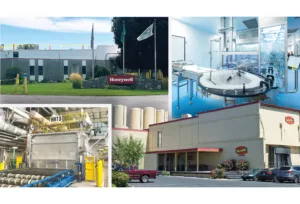In uncertain times, communication is paramount
People seek out trusted sources of information to guide decision making

As we move toward closing out 2022, businesses and their customers are feeling uncertain.
How many more COVID variants are we in for? When will supply chains bounce back? How will European conflict and energy woes continue to effect global markets? How long until we whip inflation, and will it take a recession to do so?
No matter what industry you are in, your organization doesn't have a crystal ball. But at the same time, people are increasingly looking to you for insights into these challenges as they seek out trusted sources of information that will influence their decisions.
That is your opportunity.
In times of uncertainty, communication and transparency are more important than ever. Organizations that reliably deliver useful content, information, and a compelling perspective about their sector and the issues they touch will benefit. They strengthen their credibility with audiences and cement their relevance. These organizations demonstrate thought leadership and genuine care for how their business or organization impacts real lives of the audiences they serve.
That’s what people want. In an era of historically low institutional trust with government and media, people across demographics are looking to their employers and brands they trust for reliable information.
At DH, we're often asked by clients across the private and public sectors about how best to deliver insightful content to their audiences. It starts with listening first, understanding what they care about, and asking them directly.
Commit to annual audience research or conversations through surveys, insight interviews, or facilitated group meetings. Organizations that understand their constituents can communicate in a way that connects back to what they care about. Remember, it's not about what you want; it's about what they want.
Clearly articulate—meaning ditch industry jargon and talk to people how they speak—what you're seeing in the industry or issue, what you're doing to make people's lives better, and proudly affirm how that connects to what your organization and customers value. That's the type of authenticity we see resonating with consumers across industries, geography, and demographics.
Connect with your audiences where they are. Study their media consumption and engagement behaviors—do they spend more time reading emails or scrolling social media? Do they watch programming through streaming services or cable? Do they attend community events and, if so, with which of your potential partners? You need messaging content that fits the format and tone of each medium, respectively. Be a student of the channels you communicate through—email marketing, social media, and digital advertising change weekly, and that's hardly an embellishment.
Ensure your content is culturally responsive and community centered. Different communities connect with different stories and different calls to action. Doing your homework means ensuring representation from those communities as creators of your messaging and marketing content. We often counsel clients that historically excluded communities want to see "nothing about me without me."
In the age of five-word posts and six-second videos, our attention is at a premium. Be concise. Be compelling. Stay positive. If you want to drive actual action or change with your audience, avoid fear-based content. Make space for video-based content—it is the coin of the realm in today's paid and owned media channels.
And remember, audiences are sophisticated. They're attuned to the difference between what you say you value and what you do to demonstrate those values. Never claim a value that you aren't prepared to act on in the ways your employees, customers, and the broader community would expect.
Regardless of the economy, consumers' expectations for meaningful information and genuine dialogue with organizations will continue to rise thanks to technology and best practices being laid by larger consumer-focused brands. As such, it has never been more important for all organizations to invest in understanding what makes for effective customer or constituent experience, then prioritize and operationalize that experience across all aspects of your business. Anyone with the potential to interface with your audiences—from the CEO to the customer service team—should be trained to deliver an excellent customer experience and live the values that drive your organization.
Recognize that while we may face economic headwinds in the coming years, Washington—and specifically Spokane—is still well-positioned for resilience and growth. As business owners, we can rely on that, but that doesn't mitigate the pain communities are likely to experience along the way. Your opportunity to build brand affinity, loyalty, and engagement with the community is by asserting yourself as a reliable source of information that aligns with the values of the community during this uncertain time. Do that, and on the back end of this uncertainty, you can be certain audiences won't forget how you were there for them.

_c.webp?t=1763626051)
_web.webp?t=1764835652)

